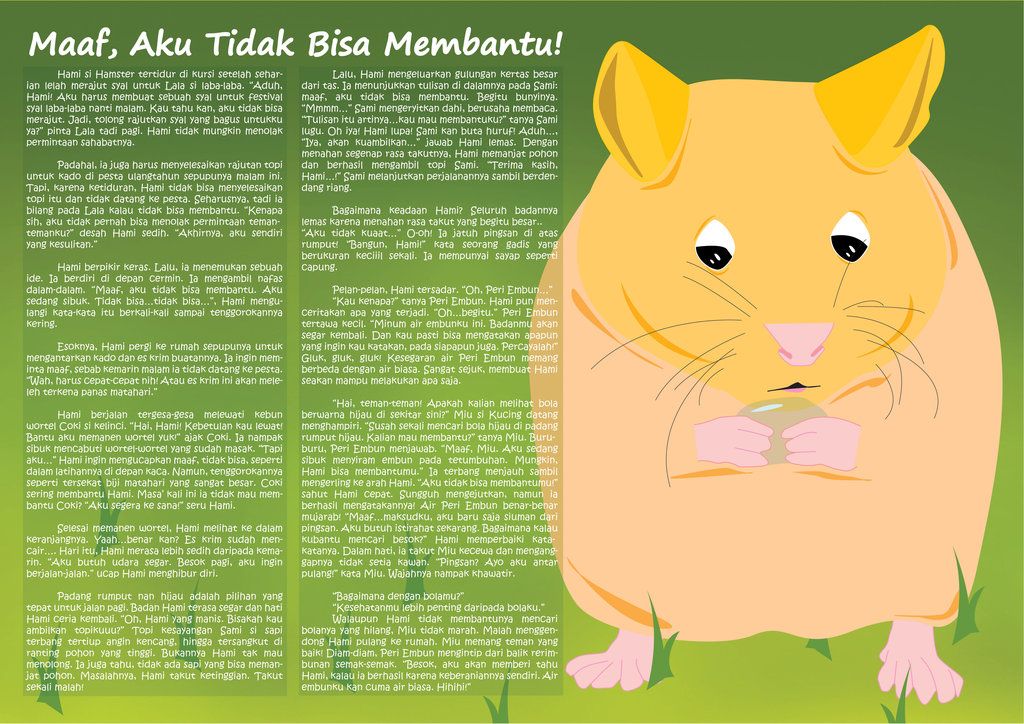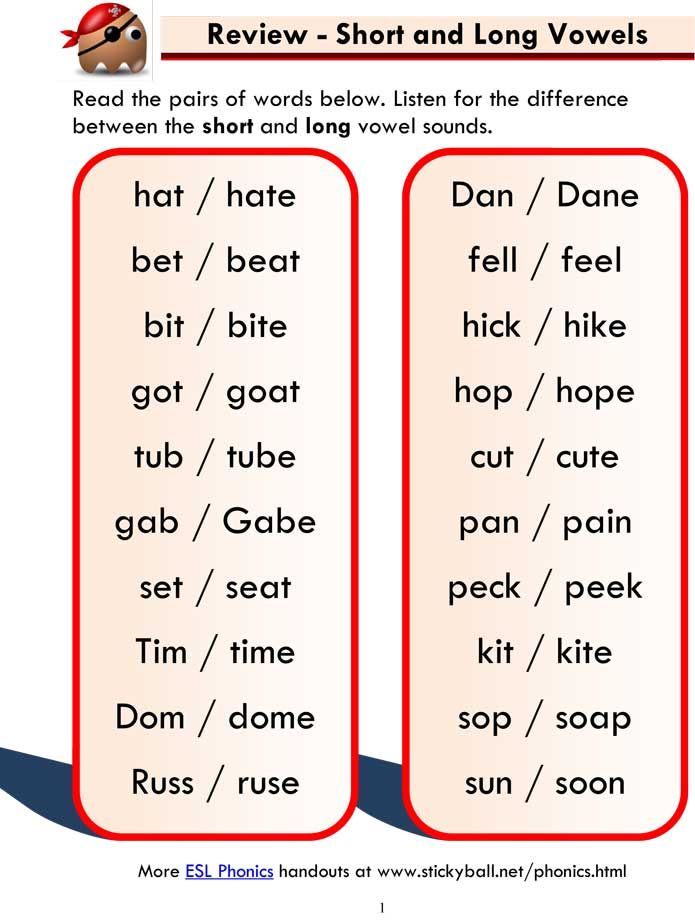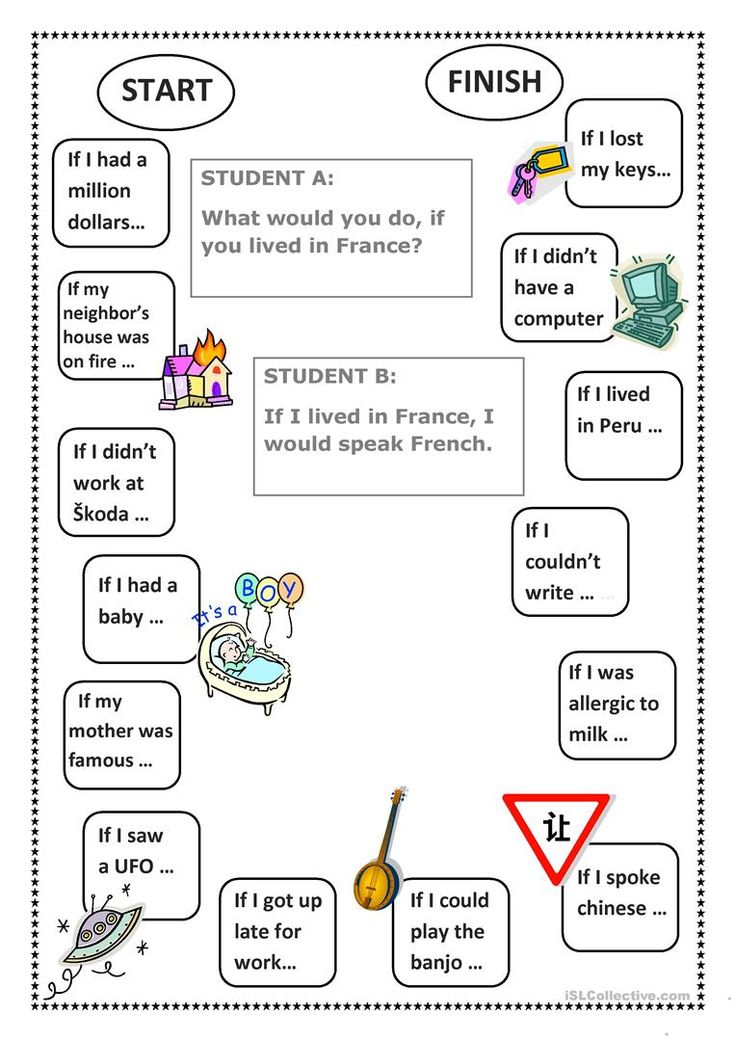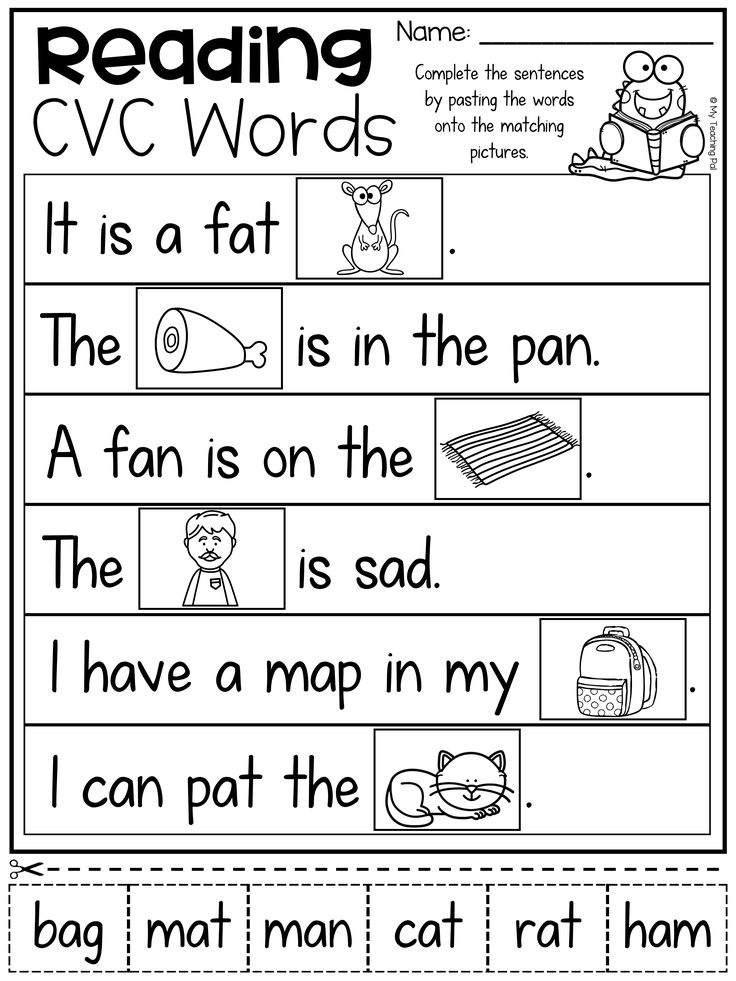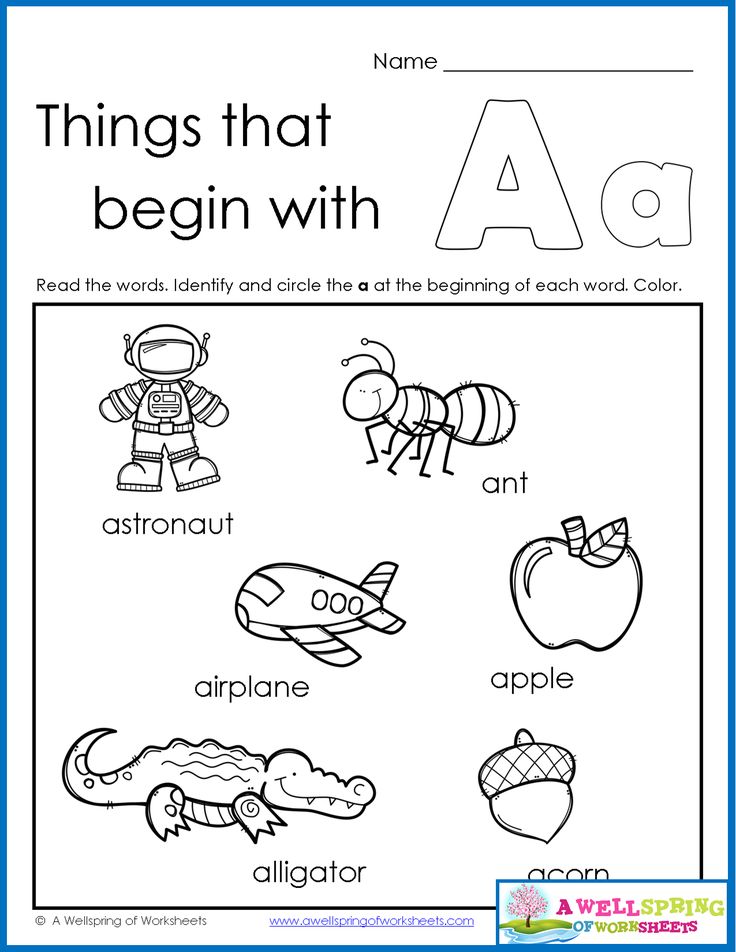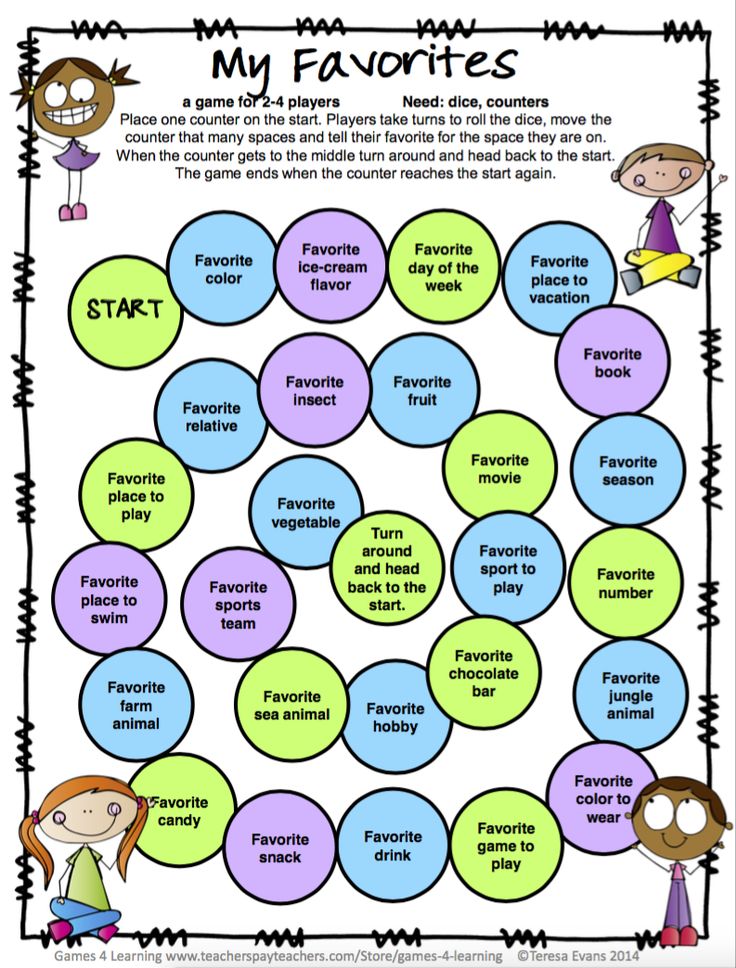Stories about hamsters
HAMILTON THE HAMSTER - Bedtime
By Paula Moore
Once upon a time there was a smart little hamster named Hamilton. He lived in a butcher shop owned by a man named Mr. Roman. Mr. Roman didn't pay much attention to Hamilton. Hamilton had no cage – he went anywhere in the shop he pleased. Mr. Roman would put out some bread crumbs for Hamilton every now and then. But mostly Hamilton was on his own, scrambling around looking for food and water.
Hamilton was very lonely living like this. He just wanted to be someone's pet – to live in a cozy cage with shavings to make a nest, and lots of good crunchy food. Hamilton was tired of being hungry, and he wanted to be loved!
So every day, when Hamilton heard the bells jingle on the shop door, he knew a customer would walk in and look at the meats. Hamilton would scramble on top of the wooden crates, and yell "Hey Mister! I'd make a great pet! Will you take me home? Hey look! I can do tricks. How 'bout a back flip!" Then Hamilton would jump up into the air and do a backwards somersault.
Unfortunately though, customers just didn't notice Hamilton. And to a human, Hamilton's yelling only sounded like "eeeeeh, eeeeeh."
Outside on Mr. Roman's shop window, there were store signs that said "Pork Chop Special - $1.99 per Pound" and "100% Pure Grain Fed Beef."
One day, like many other days, a man stood outside the shop reading the store signs. Hamilton had read the signs, too, and was watching the man. The man came in, looked at Mr. Roman, and said, "Where's the beef?" And Hamilton, who was very hungry by this time, said "Hey! Where's the grain?!" But of course he only sounded like "eeeeeh". Hamilton knew by now he had to do something drastic to get attention. So he decided to make a big sign, too.
Hamilton saw a big purple pen, and he found some poster paper scraps. He grabbed the pen, which of course is very long to a hamster, and wrote on the poster paper, "My name is Hamilton, please take me home to be your pet." Then Hamilton waved the sign all around in the air. The man saw something moving over to the side of the shop, and there was the little hamster with the sign.
The man saw something moving over to the side of the shop, and there was the little hamster with the sign.
The man knew that most hamsters can't read or write and thought that this must be a trick. So he said to Mr. Roman the butcher, "Roman, you must be trying to get rid of your pet hamster." Mr. Roman said, "Nah, the little guy just hangs out here."
Hamilton knew this was his chance to be someone's pet. So he grabbed the purple pen, turned the poster paper over, and was about to write another message to the man, when the purple ink began to leak all over his paws and fur.
The man stared at Hamilton, thinking the Hamster had chewed on the pen, and he said "What a mess!" Thinking quickly, Hamilton wrote on the sign, "Pets Are Purple, Too!"
And as the man realized this hamster could actually read and write, he began to get an idea. This little guy would make a great pet! The kids would love him!
With Mr. Roman's permission, the man scooped Hamilton up, put him in a nice box, and took him to a pet store where he bought all the fancy little equipment hamsters need to be happy.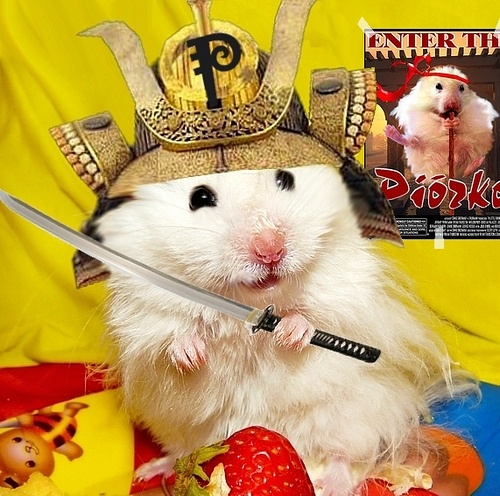 At home, his kids cleaned off all the purple ink and gave Hamilton a teeny little pen and a teeny little notepad. (The first question they asked Hamilton was "What is your name?") From that time on, Hamilton lived happily ever after with his new family.
At home, his kids cleaned off all the purple ink and gave Hamilton a teeny little pen and a teeny little notepad. (The first question they asked Hamilton was "What is your name?") From that time on, Hamilton lived happily ever after with his new family.
The Untold Story of the Hamster, a.k.a Mr. Saddlebags | Science
Upon discovering Mr. Saddlebags, Aharoni gave them the name, oger. We know them, in English, as the Syrian hamster or, because it is now the most common hamster in the world, simply the hamster. De Agostini / Getty ImagesThere are many ways to be immortal. Israel Aharoni, a Jewish biologist working in Turkish-controlled Jerusalem, imagined that his enduring legacy would come from giving Hebrew names to the animals of the Holy Land. Sometimes, especially for little-known animals, this meant making up new names. More often, it meant matching descriptions in the Torah with the species in and around Jerusalem.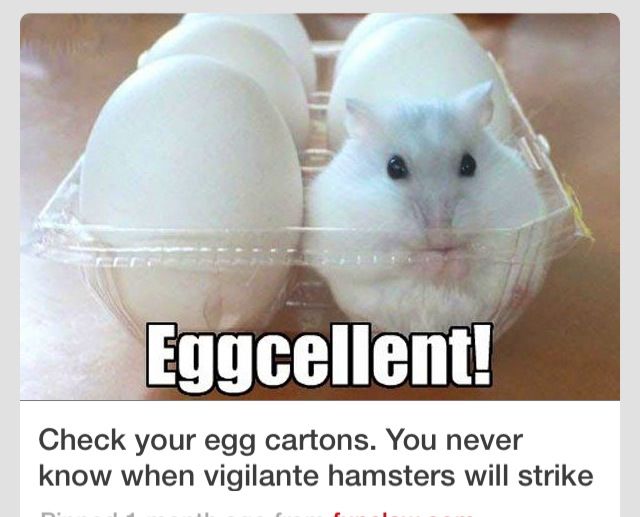 What, for example, was a rěēm? It is described as a clean animal with impressive horns that could cause injury. Aharoni thought it to be the aurochs, ancestor to all domesticated cows. This interpretation, like many others, seems to have stuck. But the Hebrew names of animals were not his only enduring legacy. He also captured a poorly known wild animal and in doing so changed our modern lives.
What, for example, was a rěēm? It is described as a clean animal with impressive horns that could cause injury. Aharoni thought it to be the aurochs, ancestor to all domesticated cows. This interpretation, like many others, seems to have stuck. But the Hebrew names of animals were not his only enduring legacy. He also captured a poorly known wild animal and in doing so changed our modern lives.
In the spring of 1930, Aharoni staged an expedition to the hills of Syria, near Aleppo, one of the oldest cities in the world. His quest was simple: he wanted to catch the rare golden mammal whose Arabic name translates roughly as “mister saddlebags.” On finding the animal he would either ally it with its Hebrew name in the Torah or, as seemed more likely, name it himself. But there was another motive. One of Aharoni’s colleagues, Saul Adler, thought that the animal might be similar enough to humans to serve as a lab animal in medical research, particularly for the study of the parasitic disease leishmaniasis, which was and still is common in the region.
The trip was full of challenges, among the most fundamental of which was Aharoni himself. While good at naming species, he was not good at traveling. He was, as a friend later told a scientist documenting Aharoni’s story, “a terrible coward,” who worried incessantly. He must have worried about transportation, about the weather and, above all, about being the least bit uncomfortable. And yet he was so curious—so full of a need to discover new things—that he pushed on.
Helping Aharoni on his odyssey was a local hunter named Georius Khalil Tah’an. He had seen Mr. Saddlebags before and would lead Aharoni to where it might be found again. Aharoni instructed Tah’an to ask any people they met along the way if they had seen the golden animal. Tah’an, like many paid guides to explorers, probably thought the mission ridiculous. But he obliged, one house at a time, day after day, in the quest for the animal with the silly name.
On April 12, 1930, fortune struck. Through a series of conversations, the men found a farm where the animal had been seen. Ecstatic, Aharoni, Tah’an and several laborers supplied by the local sheik followed the farmer to his fields. Tah’an and some villagers began to dig excitedly, eagerly, without regard for the farmer, who looked on in dismay at the dirt piling up on top of his young, green shafts of wheat. They dug eight feet down. Then from the dust of the earth they found a nest and in it, the animals. They were golden, furry and tiny—Mr. Saddlebags! Aharoni had found a mother and her pups, ten soft and young. Aharoni removed the animals from the farm and gave them the Hebrew name, oger. We now know them, in English, as the Syrian hamster or, because it is now the most common hamster in the world, simply the hamster.
Ecstatic, Aharoni, Tah’an and several laborers supplied by the local sheik followed the farmer to his fields. Tah’an and some villagers began to dig excitedly, eagerly, without regard for the farmer, who looked on in dismay at the dirt piling up on top of his young, green shafts of wheat. They dug eight feet down. Then from the dust of the earth they found a nest and in it, the animals. They were golden, furry and tiny—Mr. Saddlebags! Aharoni had found a mother and her pups, ten soft and young. Aharoni removed the animals from the farm and gave them the Hebrew name, oger. We now know them, in English, as the Syrian hamster or, because it is now the most common hamster in the world, simply the hamster.
Today, Syrian hamsters are nearly everywhere. A precise count is impossible. They are in classrooms, bedrooms and, as Aharoni envisioned, research labs. They scurry under refrigerators. They log thousands of collective miles on hamster wheels.
The Syrian hamsters Aharoni collected were the first to be studied in any great detail. But he wanted to do more than study them; he wanted to breed them so that hamsters could be used as laboratory animals. Another species of hamster was already being used for research in China, but they would not reproduce in captivity and so had to be collected again and again. Aharoni thought he would be luckier with the Syrian hamster, though just why he was so optimistic is unknown.
But he wanted to do more than study them; he wanted to breed them so that hamsters could be used as laboratory animals. Another species of hamster was already being used for research in China, but they would not reproduce in captivity and so had to be collected again and again. Aharoni thought he would be luckier with the Syrian hamster, though just why he was so optimistic is unknown.
 De Agostini / Getty Images
De Agostini / Getty Images Aharoni took the hamsters back to his lab in Jerusalem. Or at least he took some of them. In the wheat field, the mother, upon being placed in a box, began to eat her babies. As Aharoni wrote in his memoir, “I saw the [mother] hamster harden her heart and sever with ugly cruelty the head of the pup that approached her most closely.” Tah’an responded by putting the mother in a cyanide jar to kill her so that she would not eat any more of the babies. In retrospect, killing the mother may have been imprudent because it left the infants alone, too small to feed themselves. Aharoni began with 11 hamsters, and just 9 made it back to Jerusalem, each of them defenseless. Their eyes were still closed.
The babies, fed with an eye-dropper, did well for a while, maybe too well. One night, when the mood around the lab had grown hopeful, five hamsters grew bold, chewed their way out of their wooden cage and were never found. Hein Ben-Menachen, Aharoni’s colleague who was caring for the hamsters, was overwhelmed by the incident. In Aharoni’s words, he was “aghast… smitten, shaken to the depths. . .” These hamsters were serious business.
Hein Ben-Menachen, Aharoni’s colleague who was caring for the hamsters, was overwhelmed by the incident. In Aharoni’s words, he was “aghast… smitten, shaken to the depths. . .” These hamsters were serious business.
Four hamsters remained. Then one of the male hamsters ate a female and so there were just three—two females and one suddenly large male. The odds were getting worse by the day, but Ben-Menachen, shamed but determined, would try. He separated the hamsters and made a special chamber filled with hay for the hamsters to breed in. He put a single female in the chamber and then—after she had found a quiet spot among the hay—introduced her only surviving brother. The brother chased his sister around and caught up with her. What happened next Ben-Menachen credited to God, who “nudged a single wheel of the uncountable wheels of nature—and a miracle happened”: the brother and sister hamsters mated.
From then on the hamsters would be fruitful and multiply. That single brother and sister gave rise to 150 offspring who begat even more until there were thousands and then tens of thousands, and finally the modern multitudes of hamsters. These hamsters colonized the world, one cage at a time. Some hamsters were smuggled out of Jerusalem in coat pockets. Others made it out in more conventional ways, in cages or packing boxes. They spread like the children of the first people from the Torah, Adam and Eve. And so it is that every domestic Syrian hamster on earth now descends from Aharoni’s first couple.
These hamsters colonized the world, one cage at a time. Some hamsters were smuggled out of Jerusalem in coat pockets. Others made it out in more conventional ways, in cages or packing boxes. They spread like the children of the first people from the Torah, Adam and Eve. And so it is that every domestic Syrian hamster on earth now descends from Aharoni’s first couple.
Hundreds, maybe thousands, of papers have been written about laboratory hamsters. They have been used to understand circadian rhythms, chemical communication and other aspects of basic mammal biology. But their greatest research impact has been in the context of medicine. Hamsters long served as one of the most important “guinea pigs” and helped build our understanding of human ailments and their treatments. Ironically, the success of hamsters in medical research is, in no small part, due to the specifics of Aharoni’s story. Because hamsters are inbred, they suffer congenital heart disorders (dilated cardiomyopathy in particular). Heart disease is nearly as common in domestic hamsters as it is in humans. It is this particular form of dying that has made them useful animal models for our own heart disease. Perhaps more so than any other species, they die like we die and for that reason they are likely to continue to be used in labs to help us understand ourselves.
Heart disease is nearly as common in domestic hamsters as it is in humans. It is this particular form of dying that has made them useful animal models for our own heart disease. Perhaps more so than any other species, they die like we die and for that reason they are likely to continue to be used in labs to help us understand ourselves.
Understanding the hamsters, on the other hand, has proven more difficult. The wild populations of hamsters remain relatively unstudied. Aharoni published a paper on what he saw in 1930—the depth of the burrow, the local conditions, what the hamsters were seen eating. Observations of Syrian hamsters in the wild have been rare: one expedition in 1981, one in 1997, another in 1999, but little progress has been made. Wild Syrian hamsters have never been found outside of agricultural fields. And even in the fields, they are not common. They are found only in one small part of Syria and nowhere else. Where is or was their wilderness? Maybe there is a faraway place where they run among the tall grasses like the antelope on the plains, but maybe not.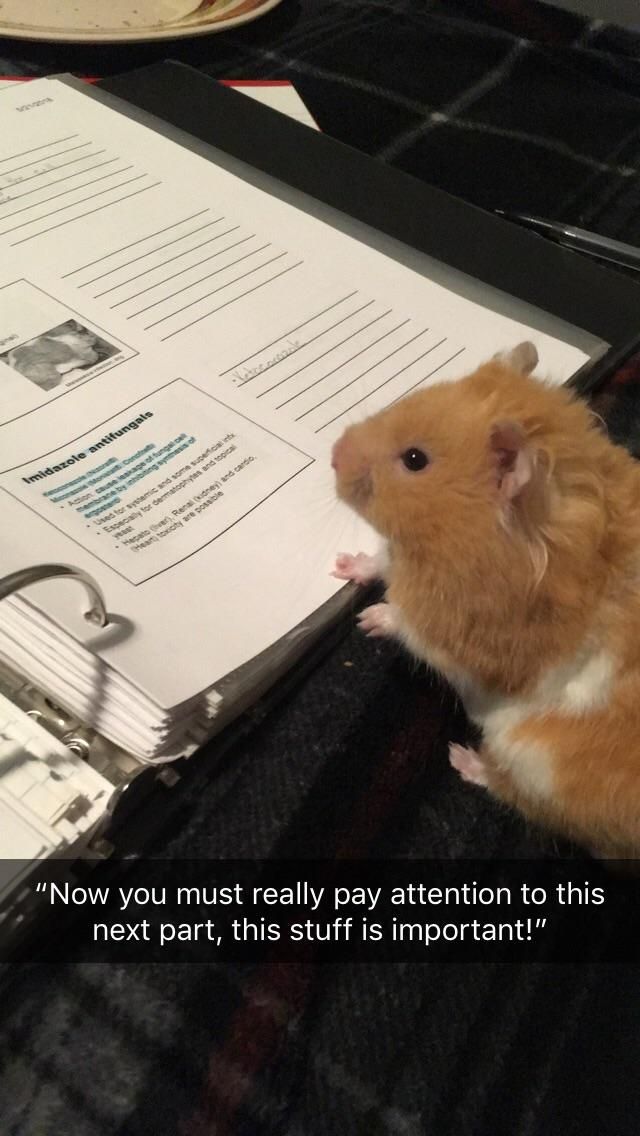 Maybe the hamsters’ ancestors abandoned their pre-agricultural niche for the wheat fields around Aleppo, where wheat has been grown for as long as wheat has been grown anywhere. Or maybe the wheat itself displaced the habitat the hamsters once used. We don’t know, but we could. All it would take would be for someone, you perhaps, to go to Syria and look; in other words, to stage a new expedition for Mr. Saddlebags.
Maybe the hamsters’ ancestors abandoned their pre-agricultural niche for the wheat fields around Aleppo, where wheat has been grown for as long as wheat has been grown anywhere. Or maybe the wheat itself displaced the habitat the hamsters once used. We don’t know, but we could. All it would take would be for someone, you perhaps, to go to Syria and look; in other words, to stage a new expedition for Mr. Saddlebags.
In the end, domestic hamsters are Aharoni’s legacy. Maybe this is how he had intended to live on all along, immortal everywhere that a hamster lives in a cage. When they squeak and run, they do so in his image. And so next time your hamster tries to escape, think of Aharoni, but don’t think too long, because as he would tell you, hamsters are wily and fast.
Recommended Videos
About hamsters for children of preschool and school age
This story is about hamsters for children. After reading it, you will learn a lot of interesting things about this small and cute animal.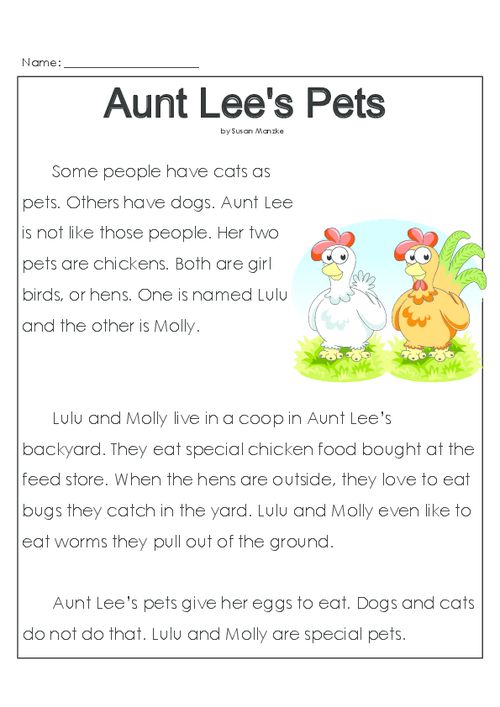
Hamsters live in the forests and fields of all continents except Australia. About 460 species of these rodents are known. In Russia, almost the entire territory of the forest-steppe and steppe zones is distributed by an ordinary hamster. The color of the animal is tricolor and bright: reddish-gray on the back, and the lower part is black. There are whitish spots on the sides of the body and on the cheeks. Body length with head 24-32 cm. nine0003
These rodents live in deep burrows that they dig in fields, roadsides, forest edges, etc. Their burrows can reach 2.5 meters, have several chambers and exits.
Hamsters are active mainly at night. They feed on grain, fruits and root crops, but they will not refuse animal food: insects, reptiles and even small rodents. This is a rather brave animal, it can not only defend itself, but, if necessary, attack.
Stores large stocks of food for the winter. Moreover, old animals place these reserves in three storerooms, and young animals in only one.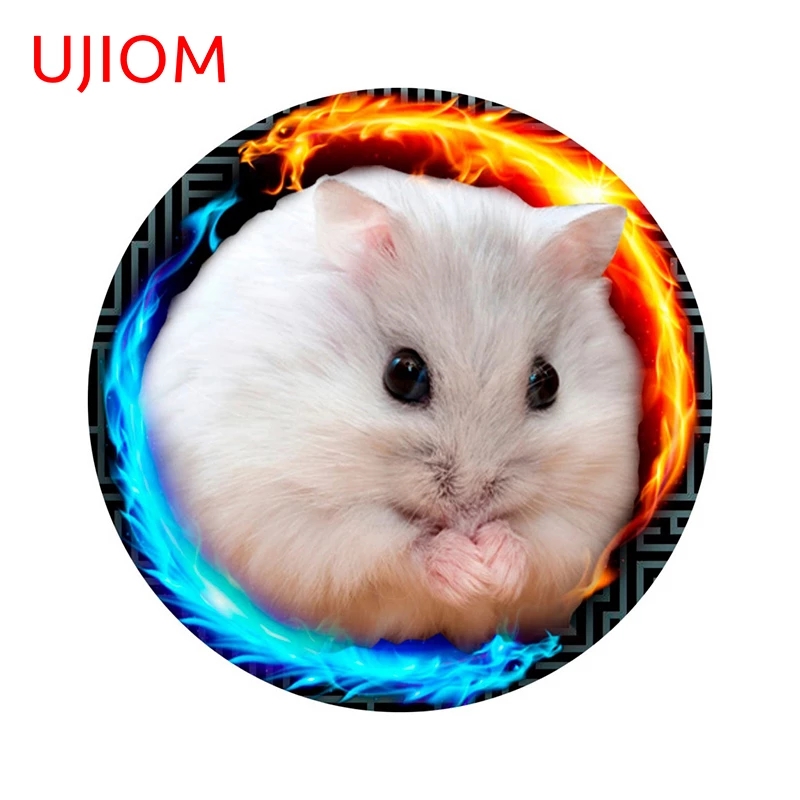 nine0003
nine0003
Hamsters are serious pests of fields and gardens. The activity and voracity of this animal brings people a lot of trouble.
In October, hamsters go into a long, but not strong winter hibernation, from time to time they can wake up, and in the thaw they even come to the surface of the earth. Feed stocks are used in the spring after waking up, when there are no plants on the ground yet.
Hamsters are rather prolific animals. Starting from April, the female gives two offspring with an average of 10 babies. nine0003
Hamsters live 3–5 years.
Syrian or golden hamsters are very popular with animal lovers. They do well in captivity. These are good-natured, trusting and unpretentious animals for food - they eat everything they give. It is not advisable to feed them with smoked meats and sausages, because the animals can be poisoned by them.
They sleep during the day and are active at night.
Hamsters are very clean. They wash and preen themselves several times a day.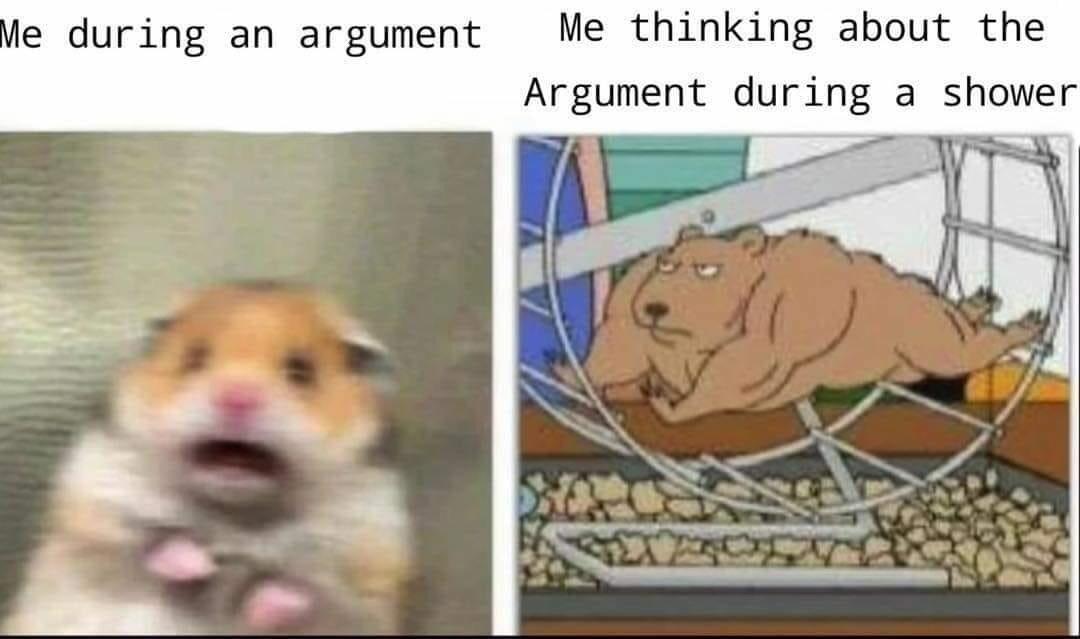 Syrian hamsters are very active and breed quickly. Under favorable conditions, they give new offspring up to 10 cubs almost every month. Babies do not need to be picked up and disturbed by the female, as it may stop feeding them. nine0003
Syrian hamsters are very active and breed quickly. Under favorable conditions, they give new offspring up to 10 cubs almost every month. Babies do not need to be picked up and disturbed by the female, as it may stop feeding them. nine0003
Twenty day old hamsters are already quite independent. These animals breed up to three years, then grow old.
Djungarian hamsters, also called "djungarians", are also very popular with breeders. They have a pointed muzzle and small ears. The area of the back of the animal is painted in an ocher-gray shade, while the belly and sides are lighter in color. Djungarian hamsters are unpretentious in care, so they are often started as a pet for a child. nine0003
Interesting facts about hamsters
- The British organize hamster races. The animals are planted in wheels made of transparent material, like a squirrel. The diameter of such a wheel is 25 cm. Each hamster rolls the wheel along its own track 10 m long. Hamster races gather about 2000 spectators.
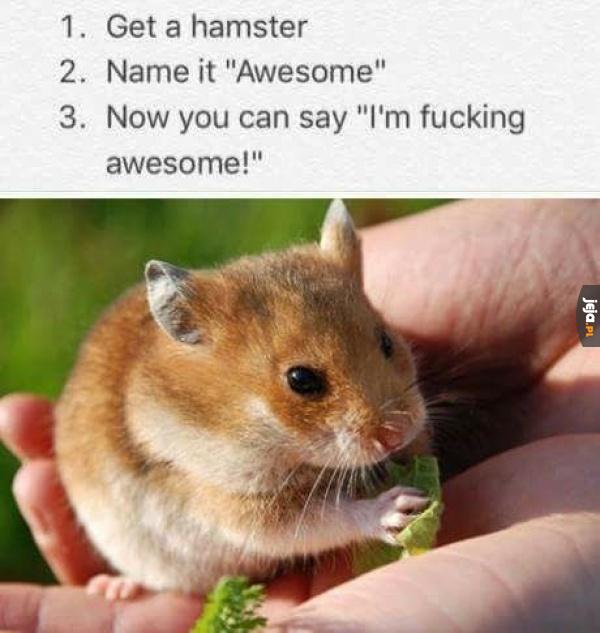
- A family of hamsters in the wild lives in peace and love throughout their hamster life. They build housing together, look for food together, sleep together in a nest, huddled together.
- The hamster in his pantries makes stocks that reach 20-30 kg. Bread, corn, potatoes, carrots - all this the hamster delivers to the hole in the cheek pouches. Each bag holds approximately 25 g. Thus, a hamster can bring 50 g of food at a time. It is easy to calculate how many trips a hamster needs to make in order to collect 20 kg in his pantry. nine0040
A story about a wild hamster
The hamster has a dark red back, white sides, and a black belly. He lives in the field. He will dig a deep hole in the ground, where he has both a nest and a pantry. In autumn, when the grain is ripe, the hamster crawls out of the hole and goes to the grain field. He will find a spikelet, bite it off the stalk, take it in his front paws and select ripe grains.
A full mouth fills with grains and hurries to its hole.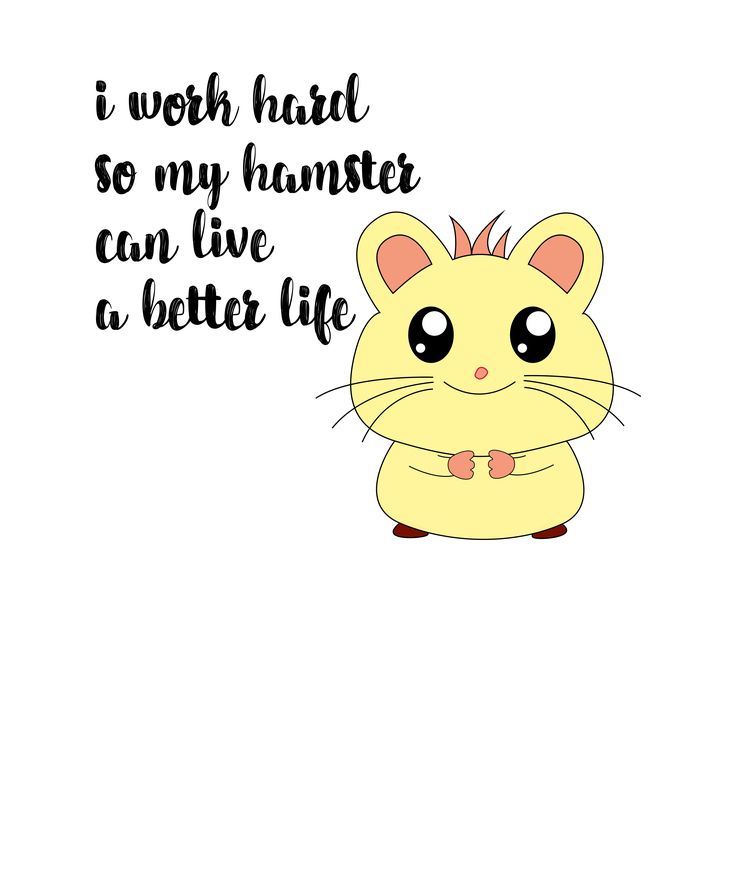 He will bring the grains to the underground cache, and he himself is back in the field - in a hurry for a fresh portion. Again, a mouthful of grain carries. nine0003
He will bring the grains to the underground cache, and he himself is back in the field - in a hurry for a fresh portion. Again, a mouthful of grain carries. nine0003
One day the children found a big old hamster doing this activity. He did not even have time to come to his senses, as the children grabbed him and threw him into a bag.
The hamster fumbles in the bag, squeaks, but cannot escape.
The children brought it to school - the teacher was surprised:
– How did he not bite you when you caught him?!
Opened the bag, transplanted the hamster into a cage, looks, and at the bottom of the bag there is a handful of grains of bread. Then the teacher understood why the hamster did not bite the children: his mouth was full of grains. In the meantime, the hamster was spitting grain out of his mouth, the children had already put him in a bag. nine0003
– You see, children, – said the teacher, – how much grain the hamster collected in the field and pulled to his shelter! And how many ears he cut off, spoiled . .. These rodents bring a lot of harm to our fields. Therefore, we are fighting with them ... And we will leave this hamster in our living corner. Let everyone look and find out what an ordinary hamster looks like - a pest of our fields.
.. These rodents bring a lot of harm to our fields. Therefore, we are fighting with them ... And we will leave this hamster in our living corner. Let everyone look and find out what an ordinary hamster looks like - a pest of our fields.
A story about a domestic hamster
Uncle Dima gave Slava a hamster.
Slava has never seen a live hamster. So when his uncle took it out of his pocket, the boy got a little scared, just a little bit. He thought it was a mouse. No, Slava is not afraid of mice, he just doesn't like them. nine0003
The hamster was small, red-haired, and his eyes were like two black beads.
“Take it,” Uncle Dima said. - do not offend him.
Everyone liked the hamster. And my mother did not mind that he stayed with them.
Slava put the hamster in a cardboard box. And he put the box by his bed.
But the hamster needs to be fed.
– Mom, what does the hamster eat?
“I don’t know,” mother spreads her arms helplessly.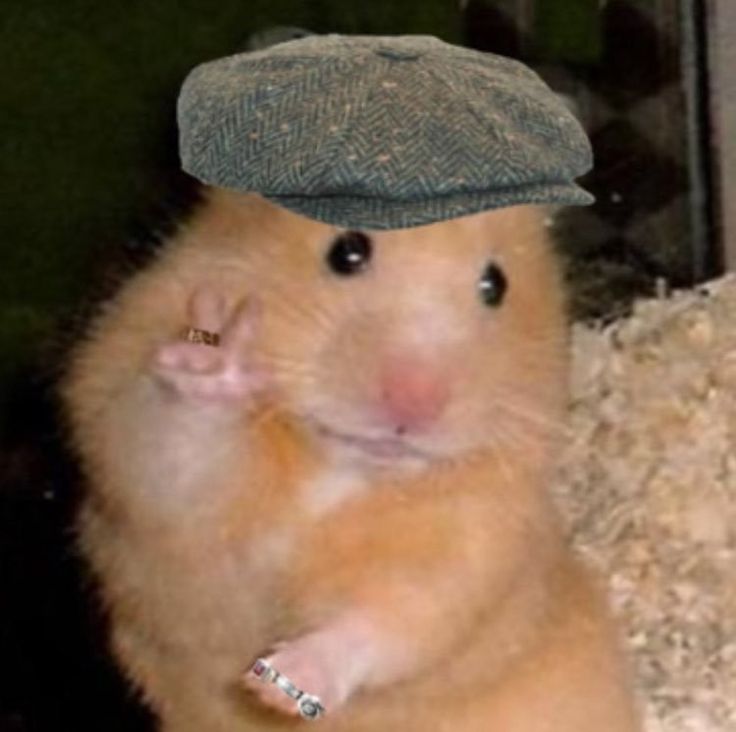 - I should have asked Uncle Dima. Everything, probably, eats what they give. nine0003
- I should have asked Uncle Dima. Everything, probably, eats what they give. nine0003
But Slava, though small, knows that only hippos eat everything. Even in the book it is written that they ate galoshes, and they can eat whatever you want. They are huge and scary, and the hamster is small and pretty. And you need to feed him with something like that ... Who knows what hamsters eat? Maybe give him some bread?
We decided to give him different kinds of food. Whatever he wants, he will eat.
But they came up with a great idea, right? This is my mother…
So a hamster began to live with them.
The box, although large, is still cramped. And to make the hamster's life more fun, Slava let him walk around the room. Did this several times a day. nine0003
The hamster is small but cunning!
Slava puts a carrot on the floor so that the hamster, as if by chance, finds it. Will he hide himself and watch what the hamster is doing?
Animal hides a carrot under the bed and nibbles on it.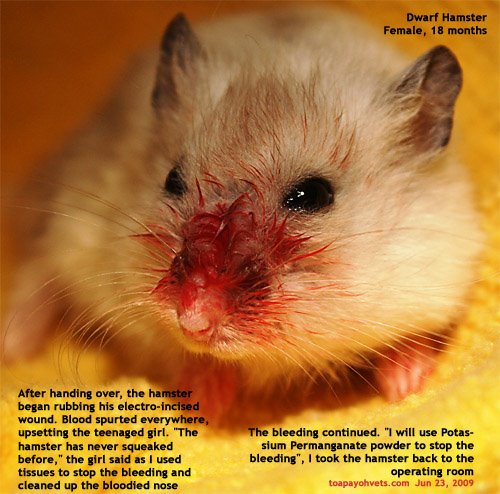 But he does not swallow, but hides his cheeks. When he fills his mouth, then he appears. He sits in the middle of the room and waits to be put in boxes. True, without carrots it will not be given into hands for anything. Every time you have to catch it.
But he does not swallow, but hides his cheeks. When he fills his mouth, then he appears. He sits in the middle of the room and waits to be put in boxes. True, without carrots it will not be given into hands for anything. Every time you have to catch it.
Slava lowers the hamster into the box. He quickly scoops carrots out of his cheeks and immediately asks to be "free" from his house. nine0003
And so it goes all the time - making supplies. That's how smart! Slava is not happy with her hamster.
Video about hamsters for children
VKontakteFacebookTwitter
Read the book “Traveling Hamsters. Modern urban fairy tale "online in full📖 - Yulia Slapoguzova - MyBook.
Illustrator Polina Aleksandrova
© Yulia Slapoguzova, 2017
© Polina Aleksandrova, illustrations, 2017
ISBN 978-5-4485-8541-8
Created by the intellectual publishing system Ridero
Once upon a time there was a little boy.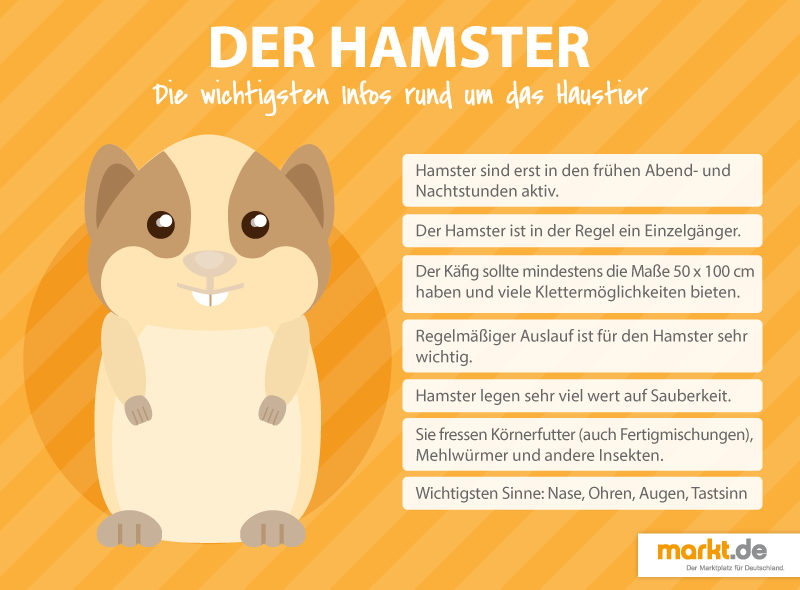 He didn't have a brother or sister - no one but mom, dad, two grandmothers, two grandfathers, one uncle and three aunts. Sometimes the boy was so lonely that he began to ask to buy him a dog or at least a cat. But adults always told him: “You are so small that you can only buy something small,” and they gave him very small cars, toy dogs and soldiers. From one children's book, the boy learned that there are hamsters in the world - very small, fluffy animals. He immediately told his father and mother about this and asked them to buy him such a hamster, since a dog was not allowed. On the day off, dad, mom and little boy went to the pet store and chose the most beautiful, fluffy and reddest hamster. He was settled at home, in the boy's room, in a small aquarium near the wall. The hamster was named Ryzhik. nine0003
He didn't have a brother or sister - no one but mom, dad, two grandmothers, two grandfathers, one uncle and three aunts. Sometimes the boy was so lonely that he began to ask to buy him a dog or at least a cat. But adults always told him: “You are so small that you can only buy something small,” and they gave him very small cars, toy dogs and soldiers. From one children's book, the boy learned that there are hamsters in the world - very small, fluffy animals. He immediately told his father and mother about this and asked them to buy him such a hamster, since a dog was not allowed. On the day off, dad, mom and little boy went to the pet store and chose the most beautiful, fluffy and reddest hamster. He was settled at home, in the boy's room, in a small aquarium near the wall. The hamster was named Ryzhik. nine0003
From morning to evening the little boy admired his hamster, fed him grains and added water. And the hamster loved cabbage and milk... At night, when it was dark in the room, the hamster did not sleep. He thought about the cabbage and milk they gave him at the pet store and felt sad. He was bored alone in the aquarium, and in order to have a little fun, he tapped his paw on the glass. One night, tapping with his paw, Ryzhik was surprised to hear someone behind the wall knocking in response to him. Ryzhik listened - yes, someone definitely answered him! Ryzhik tapped his paw a few more times, and in response there was: “Knock-knock-knock!” The sound was quiet and soft, as if a small paw was pounding on the other side of the wall. nine0003
He thought about the cabbage and milk they gave him at the pet store and felt sad. He was bored alone in the aquarium, and in order to have a little fun, he tapped his paw on the glass. One night, tapping with his paw, Ryzhik was surprised to hear someone behind the wall knocking in response to him. Ryzhik listened - yes, someone definitely answered him! Ryzhik tapped his paw a few more times, and in response there was: “Knock-knock-knock!” The sound was quiet and soft, as if a small paw was pounding on the other side of the wall. nine0003
It turns out that behind the wall, in the next apartment, in exactly the same room, there lived a little girl who also dreamed of a little friend. And her dad and mom also bought her a hamster - the same fluffy and small, only completely white. The girl called him affectionately: Belyachok. She fed her hamster cabbage and milk. The White Hamster was also sad at night. Firstly, he loved grains with water, and he was tired of cabbage with milk. And secondly, he really lacked friends. One night he heard a strange knock outside the wall. The little white decided to knock in response. So, tapping over the wall, he met Ryzhik. nine0003
One night he heard a strange knock outside the wall. The little white decided to knock in response. So, tapping over the wall, he met Ryzhik. nine0003
Now neither Ryzhik nor White was bored at night. As soon as the light in the room turned off and everyone fell asleep, Ryzhik and White White began to quietly tap each other. Gradually, they learned to understand each other, came up with their own alphabet. And soon we got to know each other better. Ryzhik told Whitey that his name was Ryzhik, that he lived in a glass aquarium in a little boy's room, and that they fed him grains and water. Belyachok told Ryzhik that his name was Belyachok, that he lived in a cage made of thin iron rods in a little girl's room, and that they fed him cabbage and milk. nine0003
Having got to know each other better, the hamsters began to envy each other. Of course, jealousy is not good. But Ryzhik and Belyachok were not just jealous, they figured out how to make it so that they no longer envy.
They decided to change places.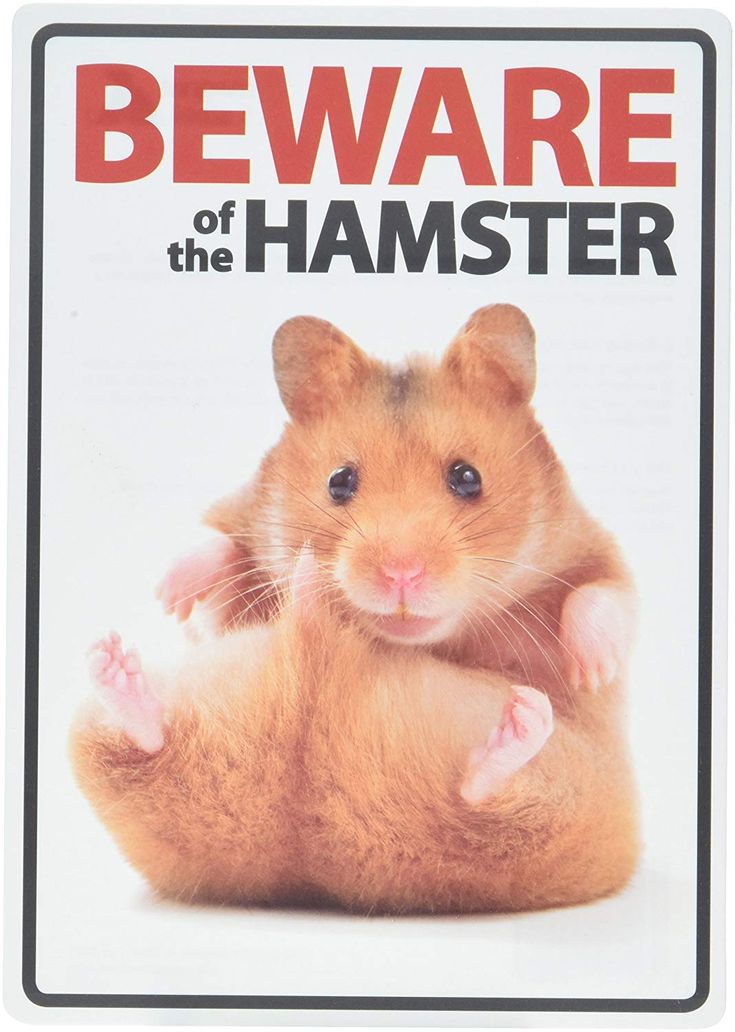 First, it was necessary for Ryzhik to get out of the aquarium, and for White White to get out of the cage. How to do it, Belyachok came up with. He noticed long ago that if you put a food bowl on top of a water bowl, and climb on top yourself, you can climb quite high. He told Ryzhik about it. White had figured out how to get out of his cage a long time ago: he knew that one of the twigs of the cage was loose and could be easily pushed aside. nine0003
First, it was necessary for Ryzhik to get out of the aquarium, and for White White to get out of the cage. How to do it, Belyachok came up with. He noticed long ago that if you put a food bowl on top of a water bowl, and climb on top yourself, you can climb quite high. He told Ryzhik about it. White had figured out how to get out of his cage a long time ago: he knew that one of the twigs of the cage was loose and could be easily pushed aside. nine0003
When night fell and the owners of the hamsters, a little boy and a little girl, were fast asleep in their rooms, the hamsters gently knocked on each other's wall.
- Knock knock! - Ryzhik rapped. It meant "Are you awake?"
“Knock-knock-knock,” rattled White. It meant: "I'm not sleeping. Let's move on to our plan."
Ryzhik immediately placed the water bowl on top of the food bowl and climbed onto this pyramid. He carefully reached for the edge of the aquarium, and... fell. Only from the fifth time did he manage to cling to the edge of the aquarium, and all because before putting one bowl on top of another, he drank all the water and hid all the food behind his cheeks.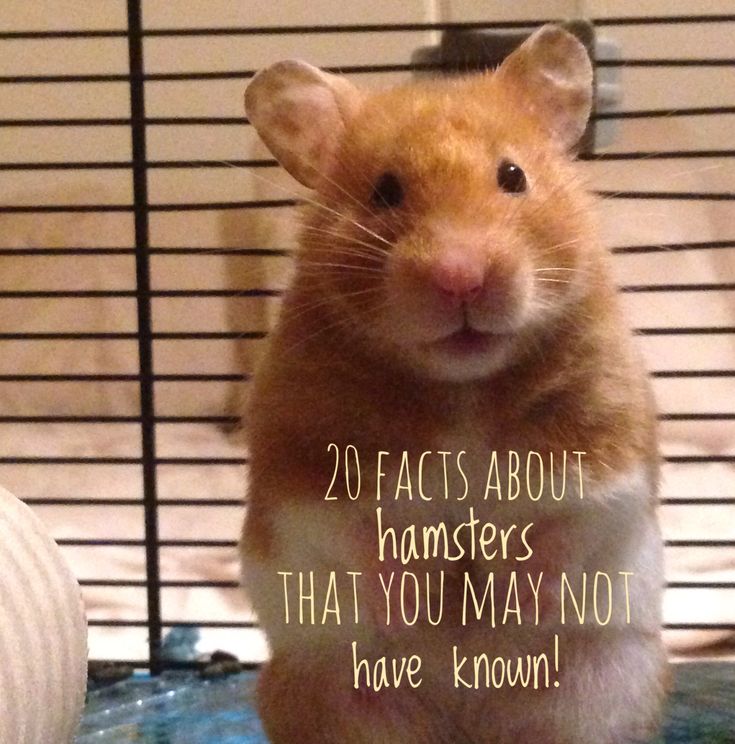 Hamsters are very thrifty, and Ryzhik could not imagine that he would leave his grains and water unattended. Due to his full cheeks, Ryzhik became heavy and clumsy. nine0003
Hamsters are very thrifty, and Ryzhik could not imagine that he would leave his grains and water unattended. Due to his full cheeks, Ryzhik became heavy and clumsy. nine0003
Finally he managed to get out of the aquarium. Ryzhik rested a little and climbed down the table leg to the floor. The floor was soft, because there was a fluffy carpet near the table. Ryzhik basked a little on the rug and ran on. Suddenly, he came across some terrible beast. Closing his eyes, Ryzhik prepared to die - he decided that the beast would swallow him up. But the beast sat without moving. Ryzhik opened one eye and looked at the beast - it also looked at Ryzhik with round black eyes. For a long, long time, Ginger waited for what would happen next, but the beast was a teddy bear, a favorite toy of a little boy, and, of course, could not do anything bad to the red hamster. Carefully avoiding the beast, Ryzhik made his way to the wall. nine0003
- Knock knock! Knock-Knock! - impatiently knocked behind the wall. It meant: "Where have you gone?"
It meant: "Where have you gone?"
Ryzhik knocked softly in response. Then both hamsters folded back the wallpaper on the wall and began to carefully gnaw at the wall. In just an hour, they gnawed through a real hamster tunnel and met! Oh, how glad they were! First, they shook hands with each other, then hugged, then recoiled from each other in order to get a good look...
When the first joy passed, the hamsters went to visit each other. First they went to Belyachok. Carefully, so as not to wake anyone up, they crawled through the tunnel under the wallpaper and ended up in the room where White lived. He was a very hospitable host and offered Ryzhik cabbage and milk. Ryzhik ate enough. nine0003
– Are you fed like this every day? Ryzhik asked thoughtfully.
"Yes," White answered sadly.
Then the friends went to Ryzhik. With great difficulty, they climbed into his aquarium. The little white immediately rushed to the feeding plate.
- Oh! - he said.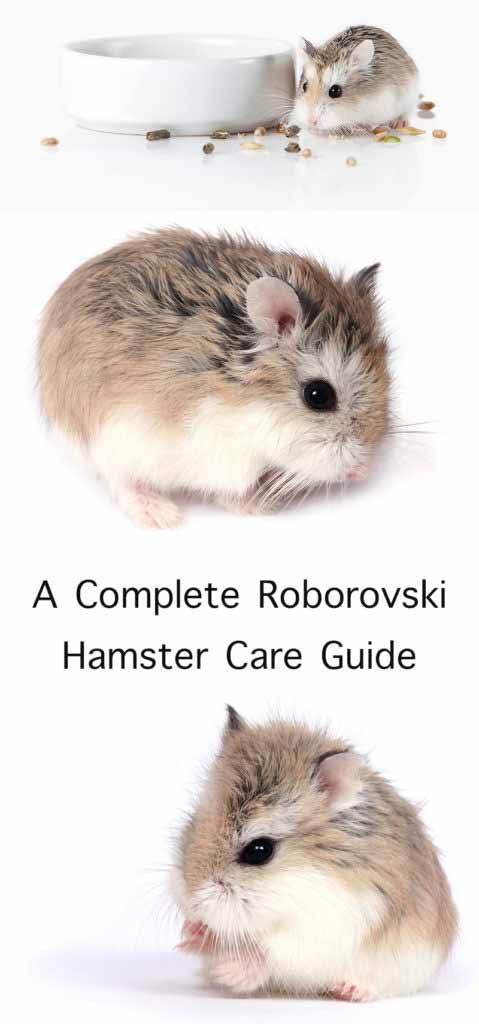 - Oh oh oh! While we were visiting, someone ate all your food!
- Oh oh oh! While we were visiting, someone ate all your food!
- Don't worry, - said Ginger, - my food was with me. I hid it in my cheeks.
He put all the grains out of his cheeks and treated White. He crunched the grains and said:
– And now some water... Do you hide it in your cheeks too?
Ryzhik answered:
– No, of course not. I drank all the water. But don't worry - there is a dripping faucet in the kitchen, you can drink water right from there.
The hamsters got out of the aquarium and went to the kitchen. “Top-top-top,” their steps were heard around the apartment. But, of course, they stomped so quietly, and the owners slept so soundly that no one heard the steps of two little hamsters. So, the hamsters went to drink water from the tap. Of course, it is best to drink water not from the tap, but from the kettle, but the hamsters were very thirsty, besides, the water in the kettle is so hot that you can burn yourself, and hamsters do not need it at all.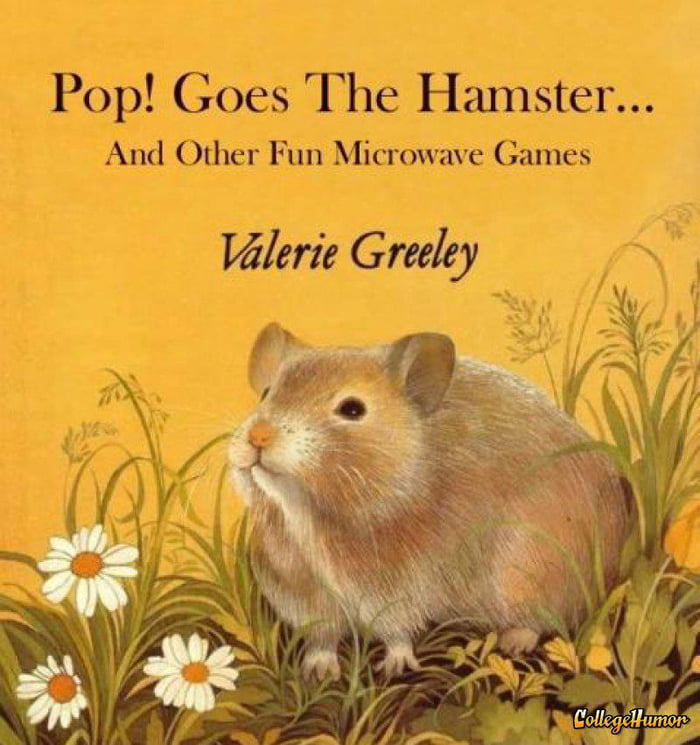 The faucet in the kitchen really leaked, and the little hamsters had a lot of fun when they took turns catching a droplet flying down. They not only got drunk, but also washed, and even bathed a little. The fact is that drops of water, if they are not caught, break up into splashes, and these splashes fall on two cheerful hamsters, making them squeal with joy. When, finally, the hamsters got tired, they went to Ginger's room and lay down on a fluffy rug on the floor. nine0003
The faucet in the kitchen really leaked, and the little hamsters had a lot of fun when they took turns catching a droplet flying down. They not only got drunk, but also washed, and even bathed a little. The fact is that drops of water, if they are not caught, break up into splashes, and these splashes fall on two cheerful hamsters, making them squeal with joy. When, finally, the hamsters got tired, they went to Ginger's room and lay down on a fluffy rug on the floor. nine0003
"You're in luck," White said. - Water and grains... Exactly what I like... But they stuff me every day with cabbage and milk... Sometimes they will give you a cucumber too...
- Cucumber? - Ryzhik did not believe his ears. - Can not be! Cabbage, milk, and even cucumber? ..
- Yes. Can you imagine?
- No. I don't represent. It's my very favorite food. I ate like this when I was still very young, in a pet store, - said Ryzhik.
– Have you been to the pet store? White was surprised. nine0003
nine0003
- Yes, I was until they bought me. Aren't you from the same store?
- No, White said. I lived in a different cell, a big, big one. There were a lot of us little hamsters there. And I was presented to my mistress - a girl. Probably because of the whole family I was the only completely white one.
Ryzhik looked at White White and suddenly confessed:
– I envy you, friend…
– What are you doing, Ryzhik, – White White began to reassure him. - Your red fur coat is no worse than mine. nine0003
- No, Little White, I'm jealous that you can eat cabbage and drink milk every day.
- Well, then I envy you too, because you eat grains and drink water every day.
Hamsters are upset. For a long, long time they were silent and thought about something of their own.
- Invented! White suddenly shouted. - Invented!
- What did you come up with? – Ryzhik asked with curiosity.
- Invented! shouted White. We'll switch places!
- Excellent! - Ryzhik was delighted.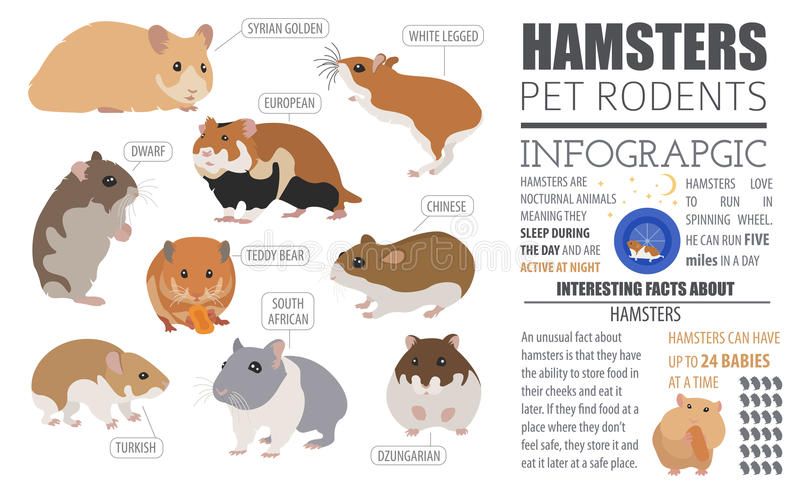 – Only…
– Only…
- Just what?
- Only the owners will notice that we have changed, because you are white, and I am red. Oh, it's a pity that such a plan is frustrated! - Ryzhik almost cried.
- And he doesn’t break anything, it’s just ... We just need to figure out how we can change without noticing. We have a lot of time ahead, Ryzhik! Now we will disperse to our cells, it's time, until the owners wake up, and tomorrow we will meet - here, in the evening - and exchange our thoughts. Okay?
Ryzhik looked around. Indeed, it was quite light in the room, apparently, morning had already come. So, it was time to return to the aquarium. He said goodbye to Whitekit and even walked him to the middle of the tunnel in the wall under the wallpaper. nine0003
- Bye! he whispered to Belyachka in parting. And he thought to himself: “It’s good that I finally have a real friend. After all, life without friends is so boring and uninteresting.” Then Ryzhik carefully climbed into his aquarium and immediately fell asleep, as he was very, very tired.